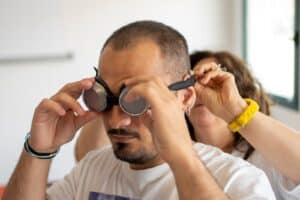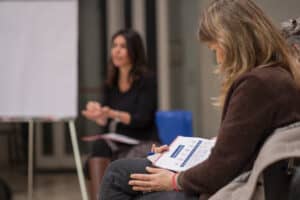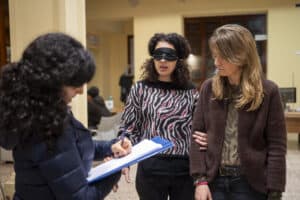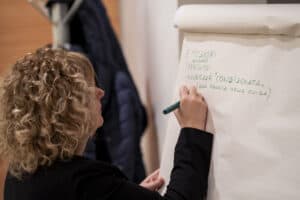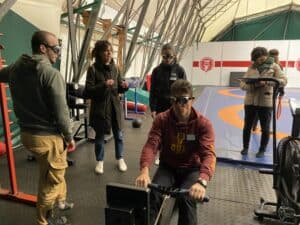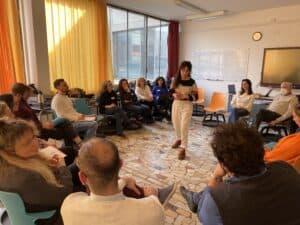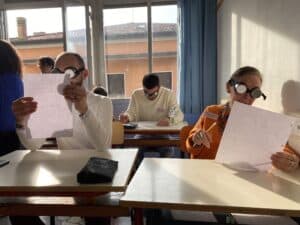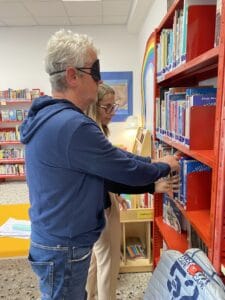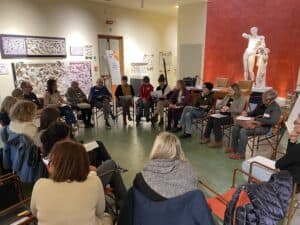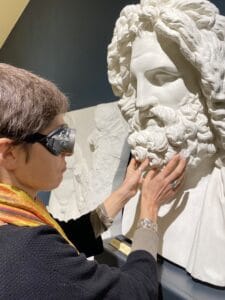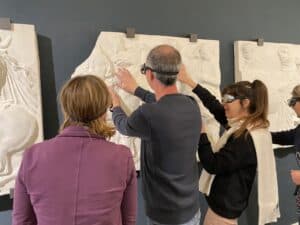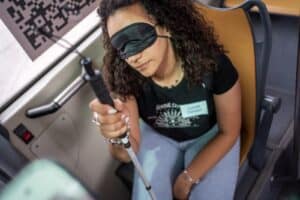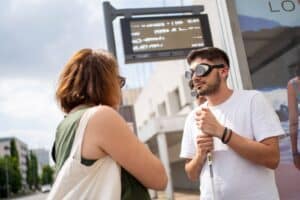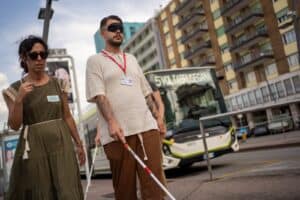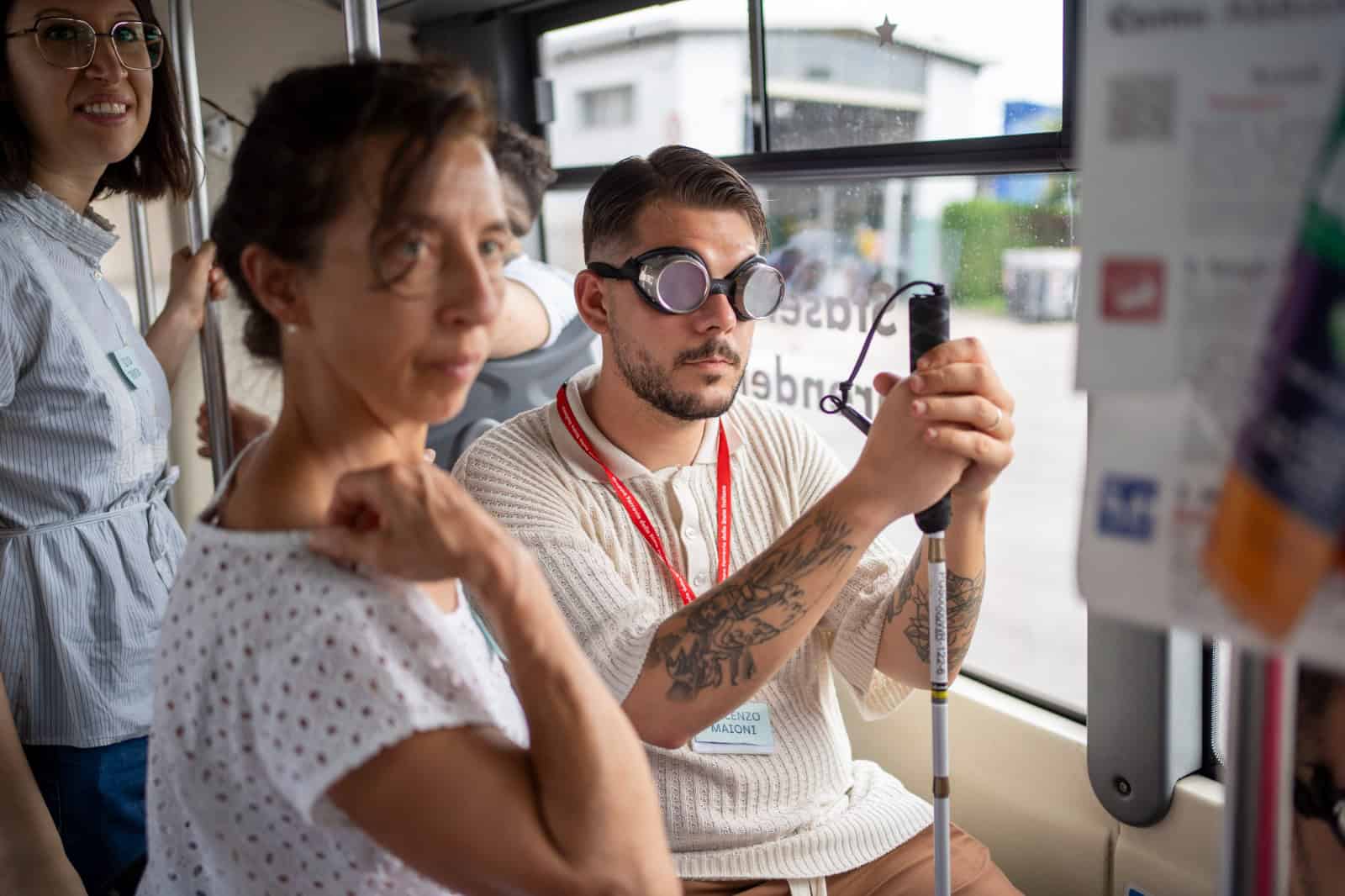The“SensoriAbile anche io” project, conceived, developed and promoted by the Robert Hollman Foundation, University of Padua, the Italian Union of the Blind and Visually Impaired section of Padua, Aniomap and the Municipality of Padua, is an innovative experiment in active participation involving, for the first time, a municipal area on the topic of visual impairment related to inclusion.
The UN’s 2030 Agenda for Sustainable Development states that through shared community actions, it is possible to achieve sustainability and inclusiveness of urban places and spaces, to ensure that every citizen has full accessibility to the facilities, services and all the activities that the city offers.
Therefore, starting from the United Nations program, with a reflection on improving the quality of life and well-being of people with visual impairment, “SensoriAbile anch’io” intends to promote greater accessibility and welcoming to those with visual impairments in the use of the various services included in the city context of Padua. In addition, the project aims to promote a “thinking culture” that is sensitive, inclusive and attentive to the needs of people with visual impairments; to initiate participatory processes of social and design change; and to focus attention on the importance of the environment as an environmental and relational facilitator in favor of inclusion.
To achieve these four goals, 12 city entities were made protagonists, two for each of these six focus areas:
- CULTURE AND TOURISM: University Museum of Archaeological Sciences and Brentella Public Library;
- SERVICES AND TRANSPORT: Central registry office of the City of Padua and Bus Italia Veneto;
- EDUCATION: 13th “Giuseppe Tartini” Comprehensive Institute and St. Benedict State Educandato Humanities High School;
- SPORTS AND LEISURE: Cus sports facilities on J. Corrado Street and Sunflower Park;
- SOCIOSANITARY: Pediatric hospice and administrative offices and outpatient clinics at the Ulss6 Euganea headquarters in Via Scrovegni;
- COMMERCIAL: Via VIII Febbraio branch of Intesa San Paolo and Campagna Amica “Terre del Santo” indoor agri market of Coldiretti Padova.
The project is proceeding through five phases of development that began in October 2023 and will end in May 2025.
It started from theanalysis of citizen and service needs by administering questionnaires to people with visual impairment, their caregivers, to promote effective actions on perceived accessibility in Padua, and to the twelve services (managers, employees, operators…), to better understand their needs with respect to the world of visual impairment.
Throughout the experiment in order to screen its results and eventual effectiveness, three questionnaires were administered to service referrers before, after and three months after the experiential meeting; another three questionnaires were administered to operators before viewing the training video, two weeks and three months after the experiential meeting.
Regarding awareness raising and theoretical and experiential training, in January 2024, the journey of stakeholders began to recognize those barriers, both environmental and relational, that blind and visually impaired people encounter in the daily performance of their actions.
The theory part offers asynchronous viewing of a 45-minute film (see the promo) to introduce to visual impairment, while the experiential one a meeting led by multidisciplinary teams (orientation and mobility instructors, educators, therapists, psychologists…) that offers participants an immersive simulation of visual deprivation, total and partial. By approaching the different perspective of the user in front of you, while respecting his or her specificities, the goal is to elicit shared reflections on your service in order to put in place environmental and relational facilitations that will make it more welcoming.
At the conclusion of each experiential meeting, a “tailor-made” document is prepared together with the operators for their own service, a kind of illustrated vademecum with the function of an operational tool to improve accessibility and reception.
